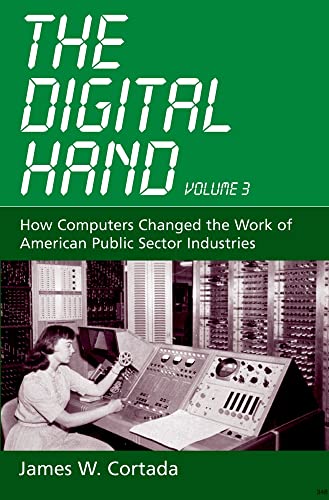digital hand vol computers von cortada (3 Ergebnisse)
Suchfilter
Produktart
- Alle Product Types
- Bücher (3)
- Magazine & Zeitschriften (Keine weiteren Ergebnisse entsprechen dieser Verfeinerung)
- Comics (Keine weiteren Ergebnisse entsprechen dieser Verfeinerung)
- Noten (Keine weiteren Ergebnisse entsprechen dieser Verfeinerung)
- Kunst, Grafik & Poster (Keine weiteren Ergebnisse entsprechen dieser Verfeinerung)
- Fotografien (Keine weiteren Ergebnisse entsprechen dieser Verfeinerung)
- Karten (Keine weiteren Ergebnisse entsprechen dieser Verfeinerung)
- Manuskripte & Papierantiquitäten (Keine weiteren Ergebnisse entsprechen dieser Verfeinerung)
Zustand Mehr dazu
- Neu (2)
- Wie Neu, Sehr Gut oder Gut Bis Sehr Gut (Keine weiteren Ergebnisse entsprechen dieser Verfeinerung)
- Gut oder Befriedigend (1)
- Ausreichend oder Schlecht (Keine weiteren Ergebnisse entsprechen dieser Verfeinerung)
- Wie beschrieben (Keine weiteren Ergebnisse entsprechen dieser Verfeinerung)
Einband
- alle Einbände
- Hardcover (3)
- Softcover (Keine weiteren Ergebnisse entsprechen dieser Verfeinerung)
Weitere Eigenschaften
- Erstausgabe (Keine weiteren Ergebnisse entsprechen dieser Verfeinerung)
- Signiert (Keine weiteren Ergebnisse entsprechen dieser Verfeinerung)
- Schutzumschlag (Keine weiteren Ergebnisse entsprechen dieser Verfeinerung)
- Angebotsfoto (1)
Sprache (1)
Gratisversand
Land des Verkäufers
Verkäuferbewertung
-
The Digital Hand, Vol 3 : How Computers Changed the Work of American Public Sector Industries
Verlag: Oxford University Press, Incorporated, 2007
ISBN 10: 0195165861 ISBN 13: 9780195165869
Sprache: Englisch
Anbieter: Better World Books, Mishawaka, IN, USA
Zustand: Very Good. Used book that is in excellent condition. May show signs of wear or have minor defects.
-
The Digital Hand, Vol 3: How Computers Changed the Work of American Public Sector Industries
Anbieter: Ria Christie Collections, Uxbridge, Vereinigtes Königreich
EUR 85,23
EUR 13,62 für den Versand von Vereinigtes Königreich nach USAAnzahl: Mehr als 20 verfügbar
In den WarenkorbZustand: New. In.
-
The Digital Hand, Vol 3 : How Computers Changed the Work of American Public Sector Industries
Verlag: Oxford University Press Inc Nov 2007, 2007
ISBN 10: 0195165861 ISBN 13: 9780195165869
Sprache: Englisch
Anbieter: AHA-BUCH GmbH, Einbeck, Deutschland
Buch. Zustand: Neu. Neuware - In The third volume of The Digital Hand, James W. Cortada completes his sweeping survey of the effect of computers on American industry, turning finally to the public sector, and examining how computers have fundamentally changed the nature of work in government and education. This book goes far beyond generalizations about the Information Age to the specifics of how industries have functioned, now function, and will function in the years to come. Cortada combines detailed analysis with narrative history to provide a broad overview of computings and telecommunications role in the entire public sector, including federal, state, and local governments, and in K-12 and higher education. Beginning in 1950, when commercial applications of digital technology began to appear, Cortada examines the unique ways different public sector industries adopted new technologies, showcasing the manner in which their innovative applications influenced other industries, as well as the U.S. economy as a whole. He builds on the surveys presented in the first volume of the series, which examined sixteen manufacturing, process, transportation, wholesale and retail industries, and the second volume, which examined over a dozen financial, telecommunications, media, and entertainment industries. With this third volume, The Digital Hand trilogy is complete, and forms the most comprehensive and rigorously researched history of computing in business since 1950, providing a detailed picture of what the infrastructure of the Information Age really looks like and how we got there. Managers, historians, economists, and those working in the public sector will appreciate Cortada's analysis of digital technology's many roles and future possibilities.



